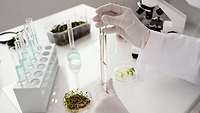Stakeholder Collaboration Required to Address Unique Safety Challenges of Novel Foods

Image credit: Bright AgroTech via Pixabay
The Food and Agriculture Organization of the United Nations (FAO) and the Singapore Food Agency (SFA) have published a joint scientific review on novel food sources and production systems. Specifically, the review discusses known food safety hazards associated with plant-based proteins, seaweeds, jellyfish, insects, and microbial proteins, as well as foods derived from cell culturing, precision fermentation, vertical farming, and 3D food printing.
In general, the authors determined that, although novel foods and production systems share some hazards with traditional foods, there still exist unique risks, and therefore a concerted effort by the food safety sector is required to keep pace with innovation.
At present, many countries and regions are still lacking legal frameworks for regulating novel foods and production systems, although some jurisdictions have successfully addressed a food safety challenge posed by a novel food, enabling its release to the market. The review provides examples of cases in which a regulatory body adapted to a unique novel food safety risk, which could lay the groundwork for other countries’ regulation of new foods and production systems. SFA, for instance, set import and pre-licensing conditions for food insects and insect food products that mitigate specific concerns about the safety of wild-harvested insects or insects fed contaminated substrate.
Additionally, ambiguities surrounding the terminologies used for new food products make international regulatory harmonization and commercialization more difficult. For example, cell-based foods are often also referred to as “cultivated,” “cultured,” or “lab-grown,” and there is much debate around the use of traditional food names (e.g., “milk,” “yogurt,” and etc.) when labeling plant-based alternatives.
Given the heterogeneity of new foods, there cannot be one single approach when it comes to food safety risk assessments; however, it is necessary to design standard, structured protocols or workflows for comprehensive assessments based in current scientific knowledge. The authors call for stakeholders across industry, the regulatory community, and academia to collaborate to address the safety of novel foods and production systems.Looking for a reprint of this article?
From high-res PDFs to custom plaques, order your copy today!






